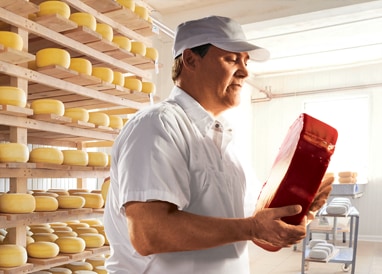Behind the Scenes with Cheese Makers Melbourne: Including Floridia Cheese
Behind the Scenes with Cheese Makers Melbourne: Including Floridia Cheese
Blog Article
Opening the Tricks of Artisanal Cheese Making: A Detailed Do It Yourself Guide
In the world of culinary workmanship, artisanal cheese making stands as a testimony to the delicate balance between custom and advancement. As we begin on this journey to demystify the art of developing exquisite cheeses, we are encountered with a tapestry of secrets and skills waiting to be deciphered.
Picking the Right Milk
When starting the journey of artisanal cheese making, the option of milk plays a critical duty in establishing the quality and features of the final product. The kind of milk picked influences the flavor, appearance, and overall account of the cheese. Raw milk, right from the pet, is liked by lots of artisanal cheesemakers because of its one-of-a-kind blend of enzymes, bacteria, and taste compounds. Nevertheless, using raw milk features threats and guidelines, making pasteurized milk a much safer alternative for beginners.
Additionally, the source of the milk, whether from cows, goats, sheep, or buffalo, adds distinctive tastes and features to the cheese. Each kind of milk brings its own nuances, enabling for a wide variety of cheese varieties to be crafted based on the selected milk.
Culturing and Coagulating
To launch the cheese-making process, the vital actions of culturing and coagulating should be carefully executed to change milk right into curds and whey. Culturing involves presenting valuable germs to the milk, which then starts the fermentation procedure. These bacteria transform lactose (milk sugar) right into lactic acid, producing the acidic environment necessary for coagulation. The kind of culture made use of can dramatically influence the flavor, texture, and ripening of the last cheese product.

The timing and temperature control during culturing and coagulation are essential variables that affect the final end result of the cheese. Proper implementation of these actions is essential to make certain the desired structure, taste, and uniformity of the artisanal cheese being produced.
Draining and Pressing Curds
After the milk proteins have coagulated and the curds have actually been reduced to release whey, the next essential step in artisanal cheese making entails draining pipes and pushing the curds to achieve the wanted appearance and uniformity of the final cheese item. Draining is the process of dividing the curds from the whey. This can be done by transferring the curds right into a cheesecloth-lined colander or mold and mildew and allowing the whey to drain pipes off naturally. The time for draining can differ relying on the sort of cheese being made and the preferred moisture material.
Pressing assists remove any continuing to be whey and compacts the curds to form a solid cheese wheel. Appropriate draining and pushing are vital steps that dramatically influence the high quality and features of the artisanal cheese being created.
Aging and Flavoring Strategies
Executing meticulous aging and flavor methods is essential in enhancing the depth and complexity of artisanal cheeses, boosting their preference accounts to elegant degrees of refinement and class. Aging plays news an important role in developing the distinct flavors and textures that differentiate artisanal cheeses. During the aging process, cheeses are stored in carefully managed settings where elements such as air flow, moisture, and temperature level are adjusted to urge the growth of beneficial molds and germs. This regulated setting enables the cheese to grow slowly, developing complicated scents and rich tastes.
Flavoring strategies additionally add significantly to the last taste of artisanal cheeses. Cheesemakers may pick to introduce additional tastes by incorporating ingredients such as natural herbs, flavors, or perhaps fruits into celebrity during the production procedure. Additionally, some cheeses are washed or rubbed with numerous fluids, such as salt water or alcohol, to enhance their textures and flavors.
Wrapping and Storing Cheeses

Conclusion
In final thought, grasping the art of artisanal cheese making includes meticulously selecting the appropriate milk, following exact culturing and coagulating processes, draining and pressing curds successfully, and utilizing different aging and flavor techniques. Bear in mind to wrap and save your cheeses correctly to make certain optimal taste and structure growth.
Each kind of milk brings its Visit Website very own nuances, allowing for a large range of cheese selections to be crafted based on the selected milk.After the milk proteins have actually coagulated and the curds have actually been reduced to this article release whey, the next critical step in artisanal cheese making involves draining pipes and pressing the curds to attain the wanted texture and uniformity of the last cheese item. A lot of cheeses ought to be wrapped in wax paper or cheese paper to permit them to breathe while protecting them from drying out. For cheeses that require to proceed aging, such as bloomy peels or washed rinds, guarantee they are stored in an awesome setting like a cheese cave or a fridge established to the ideal temperature level. By paying attention to the wrapping and storage space of artisanal cheeses, cheese manufacturers and fanatics can maintain the integrity of these specials and completely appreciate their intricate flavors.
Report this page